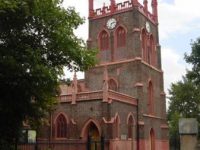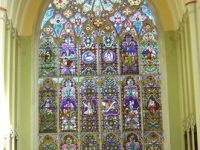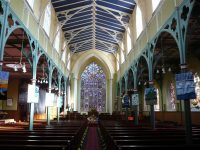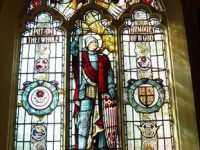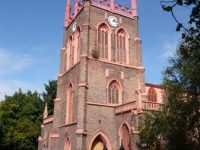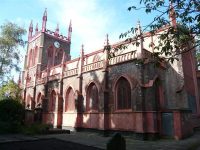St. Michael in the Hamlet: a conservation area
John Cragg, proprietor of the Mersey Iron Foundry, settled here in the early nineteenth century and built a group of five houses and the church.
These buildings are of considerable interest for their extensive use of cast iron. The architect for the church, Thomas Rickman, had met Cragg in 1812, and between them they developed the use of cast iron for church design. Rickman, also designer of the remarkable Church of St. George, Everton, was a scholarly architect, whose published work had a very important influence on the great nineteenth century Gothic revival.
The Conservation Area also includes a variety of attractive detached, semi-detached and terraced properties and a modern Training College.
St. Michael’s Hamlet Conservation Area was designated on 12th December 1968.
The houses built by Cragg are stuccoed and are designed in a semi-Tudor style, but windows, door frames, fireplaces, and other features are of cast iron. Spacious gardens, mature planting and narrow roads give the area a peaceful and secluded character.
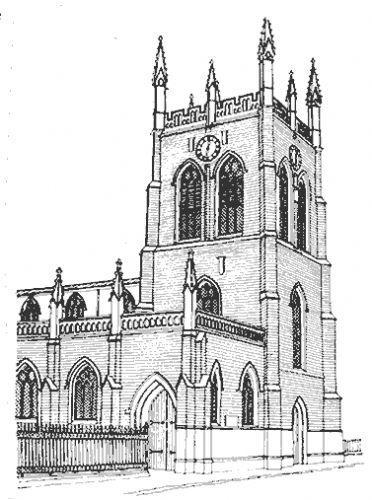
Below: Front door of No.4 St. Michael’s Road sporting a fluted Doric porch.
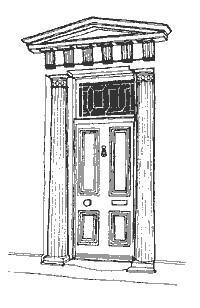
Below: No. 22 Southwood Road is a large eccentric Gothic style villa now used as the Norwegian Fishermen’s Church. All windows have pointed arched heads, and most retain Gothic iron glazing bars.

Below: Hollybank, the large house with its stables and coach house stretching along St. Michael’s Road, and garden adjoining the church-yard, was John Cragg’s own house. The garden entrance is marked by elaborate Gothic gate piers with open decorated tracery. Also of iron is a canopy with cresting over the side entrance to the house.
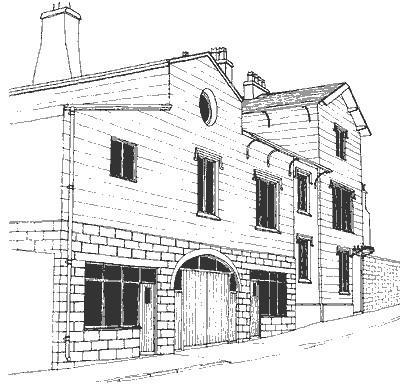
Below: The Hermitage is set back from the road. Ironwork details include an attractive delicate verandah, with cresting where it reaches the garden front.
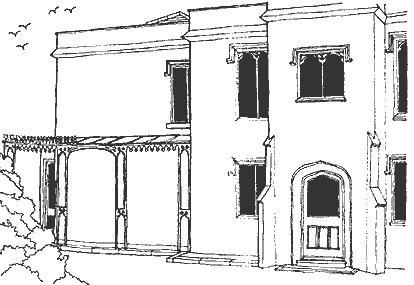
St Michael’s Church
St Michael’s Church is a Grade I listed building which contains much cast iron in its structure. It has one of the earliest and most thorough uses of industrial materials in a major building.
The church was built between 1813 and 1815 as a ‘chapel of ease’ to Walton church. The church was built by John Cragg, the principal partner in the Mersey Iron Foundry on land given by him, the architect being Thomas Rickman. Its cost was £8,000. It was consecrated on 21 June 1815 and was the second of Liverpool’s “cast iron churches”. In 1875 it was restored by the W. & G. Audsley. In 1898 it became a parish in its own right. In 1900 the north aisle was doubled in width.
The church is built in brick with many cast iron components; these include the parapets, battlements and pinnacles. The roofs are of slate slabs in a cast-iron framework. The plinth consists of a cast iron frame with slate covering. Its plan consists of a six-bay nave with clerestory, north and south aisles (the north aisle being wider than the south), a west tower, and a short chancel with a vestry to the north and a chapel to the south. The aisles, clerestory and tower have three-light windows with Perpendicular tracery. The tower also has paired three-light bell-openings, diagonal buttresses, an arcaded, embattled parapet and pinnacles. Inside is a six-bay arcade with cast iron columns. The windows are also made from cast iron. An organ occupies the east bay of the north aisle and there is a west gallery.
The stained glass in the east window is in early Gothic Revival style. The east window in the chapel dates from 1916 and is by Shrigley and Hunt. In the porch is a First World War memorial window with glass by H. Gustave Hiller. The font is in marble. In the church is a marble tablet to the memory of the astronomer Jeremiah Horrox who was born nearby.
Source: Wikipedia
